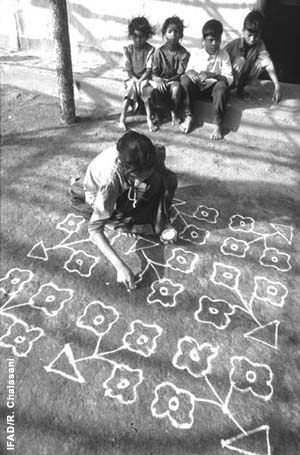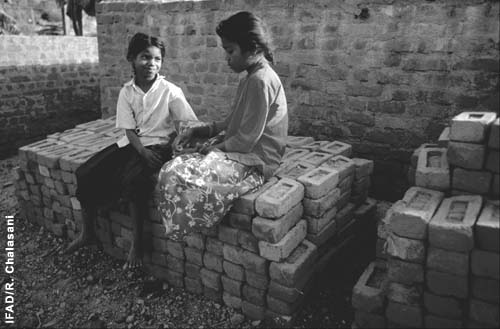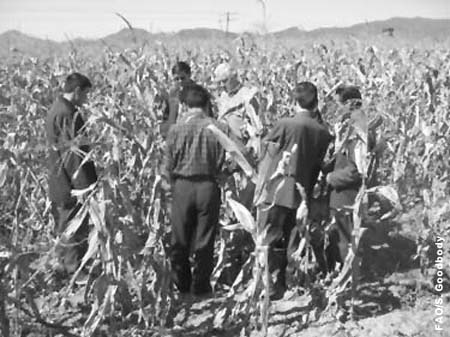
For the children of Parsatoli village in the Indian state of Chhattisgarh, getting to school was extremely difficult in the best of times. The nearest school was a considerable distance away. The village, which is surrounded by the Kurkut River and its tributaries, was completely cut off during the monsoon season. For four months, this meant no schooling at all.
Today classes can continue all year because the community has “Janbhagidari,” as the villagers have named the two-room school they built themselves. (The name means “people's participation.”) Now, they have hired a teacher and hope their school will become affiliated with the state system. By ensuring year-round education, Janbhagidari is helping to give local children a more promising future.
The school is one result of the villagers' participation in the Jharkhand-Chhattisgarh Tribal Development Programme. The programme in Chhattisgarh and the neighbouring state of Jharkhand focuses on marginal households, women, landless people, hill cultivators and tribal groups. It enables them to participate in their own development through local self-government, and aims to improve their food security and livelihood opportunities.
This eight-year, US$41.7 million programme is partly funded by IFAD. WFP is co-financing it by providing participants with food under its Food for Work programme. It is being implemented by the respective state governments through two autonomous societies. Local non-governmental organizations have helped in mobilizing the communities. An NGO known as Raigarh Sahyog Samiti, for example, supported the establishment of the Janbhagidari school.
IFAD and WFP have worked together in India since 2001. The partnership enables them to pool their strengths and learn from each other. WFP contributes its operational expertise, acquired through its field offices and collaboration over many years with central and state governments and local NGOs. IFAD lends its experience of lessons learned through working with rural poor people and other partners.
WFP's food assistance in IFAD-supported projects has proved a potent instrument for helping the most food-insecure and vulnerable households, and women.
The two agencies are working together on three programmes in India. A second tribal programme was launched two years ago in western Orissa, one of the poorest and most deprived regions in the country. Three-quarters of the population in the project area live below the poverty line.
The agencies are also collaborating on the Livelihood Security Project for Earthquake-Affected Rural Households in Gujarat. In the wake of the serious quake there in January 2001, some 20,000 people lost their lives. It is a project of special significance for WFP, which had an emergency team on the ground within days of the disaster. The project aims to secure the livelihoods of economically vulnerable households and help participants prepare to contend with any future crises.

Joint missions as important as ever

FAO and WFP's Joint Crop and Food Supply Assessment Missions play a critical role when humanitarian agencies, governments and donors plan their food security interventions. In 2004 and early 2005, joint missions sounded the alarm on the looming food crisis in Niger and helped estimate the impact of the tsunami in Aceh, Indonesia.
Some 22 joint WFP/FAO assessment missions were fielded in 2004, and six in the first half of 2005. They benefited from intense efforts to improve methodology and transparency, including the participation of donors as observers. In 2006, the guidelines for Joint Crop and Food Supply Assessment Missions will be revised. FAO will provide improved methods for estimating commercial imports and the contribution of non-cereal foods, while WFP will emphasize the distinction between chronic and transitory food insecurity, and further exploration of non-food responses.